Last Updated on January 9, 2023 by a Friendly Gardener
Does the idea of cultivating a petite tree in your home intrigue you? A beautiful bonsai is the answer. Bonsais have a reputation for being difficult to cultivate so many may opt not to try their hand, but it may not be quite as difficult as you imagine, and you may discover o passion for this art in the process.
Bonsai is not a tree species despite popular belief. Bonsai or the art of the Bonsai refers to the methodology used to artistically shape a tree. And happily, Bonsai techniques can be applied to a multitude of different tree and plant species. Not all species are ideal as bonsai trees with some being more adapted than others.
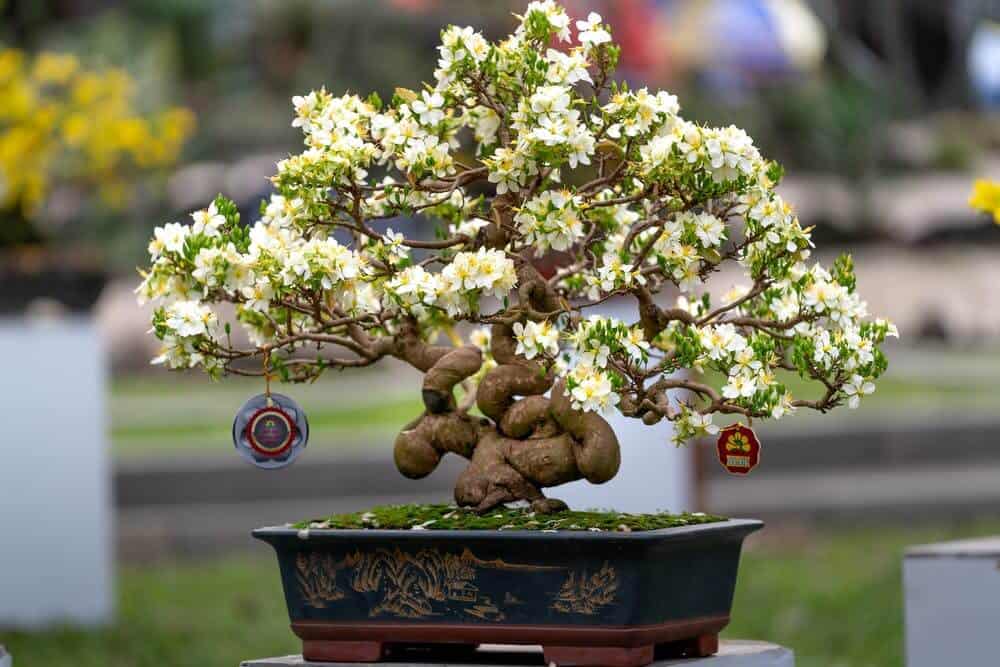
Bonsai art boasts several styles:
- Informal
- Formal
- Slanted
Style refers to the tree’s stature and the tree’s natural shape. The tree’s stature and shape can be altered through Bonsai pruning and wiring.
Type of Tree
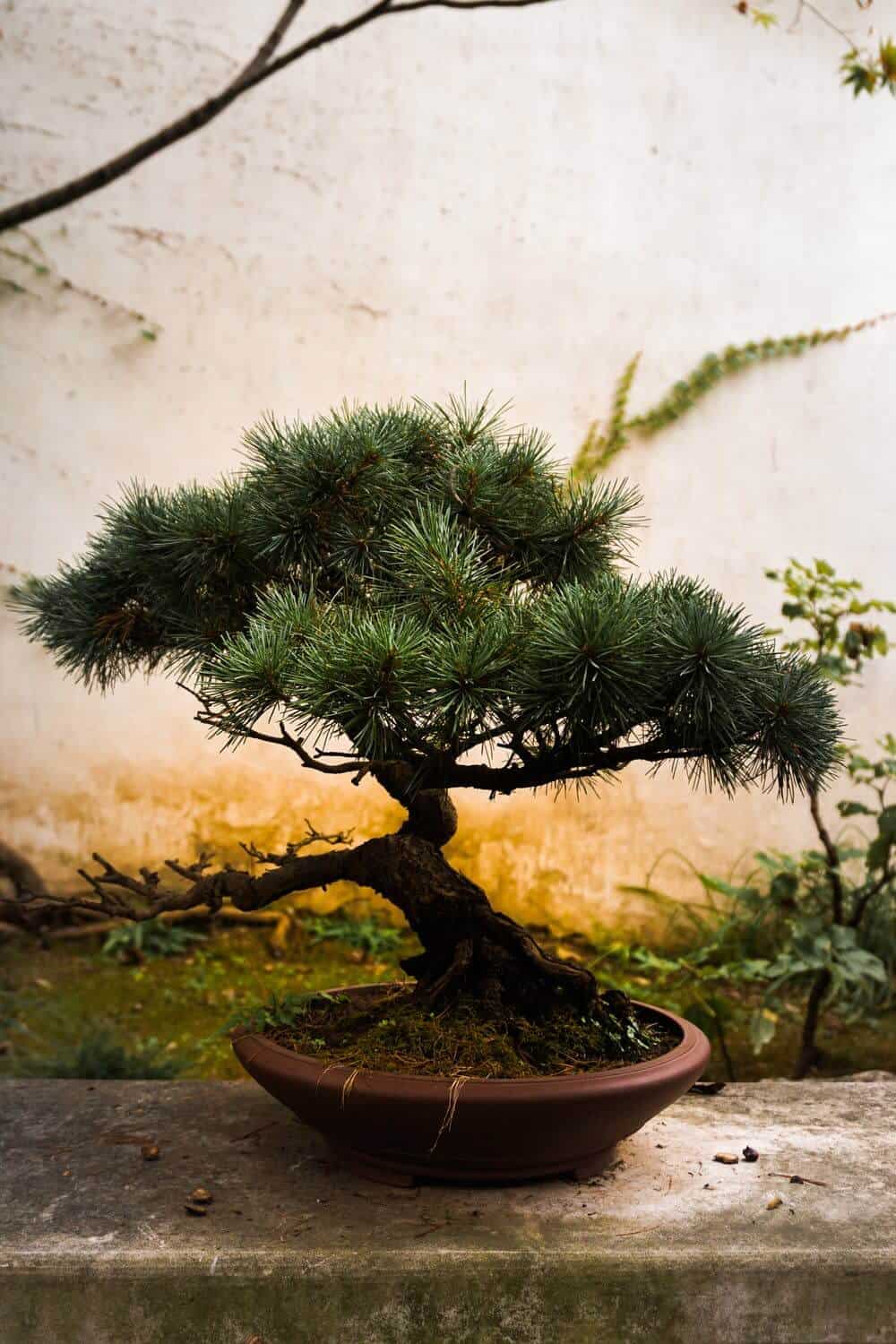
The selection of a tree for Bonsai cultivation depends on your local climate and where you plan on placing your Bonsai tree. Cultivating an indoor Bonsai tree or planting an outdoor bonsai tree will make a substantial difference in the tree selection.
Not all species thrive indoors because of relatively stable temperatures and less humidity than the outdoors can provide. Bonsai trees manage better when the natural four seasons are present with a period of dormancy.
Potential indoor Bonsai tree varieties include:
- Ficus nerifolia
- Ficus retusa
- Jade trees
- Hawaiian Dwarf umbrella trees
Potential outdoor Bonsai tree varieties include:
- Spruce
- Pine
- Junipers
- Deciduous species(leaves change with the seasons, ginkgo, elms, or maple)
- Cotoneaster
- Boxwood
Each species will have specific needs. Research bonsai tree species to select the correct type for your climate and type of cultivation, indoor or outdoor.
Bonsai Care
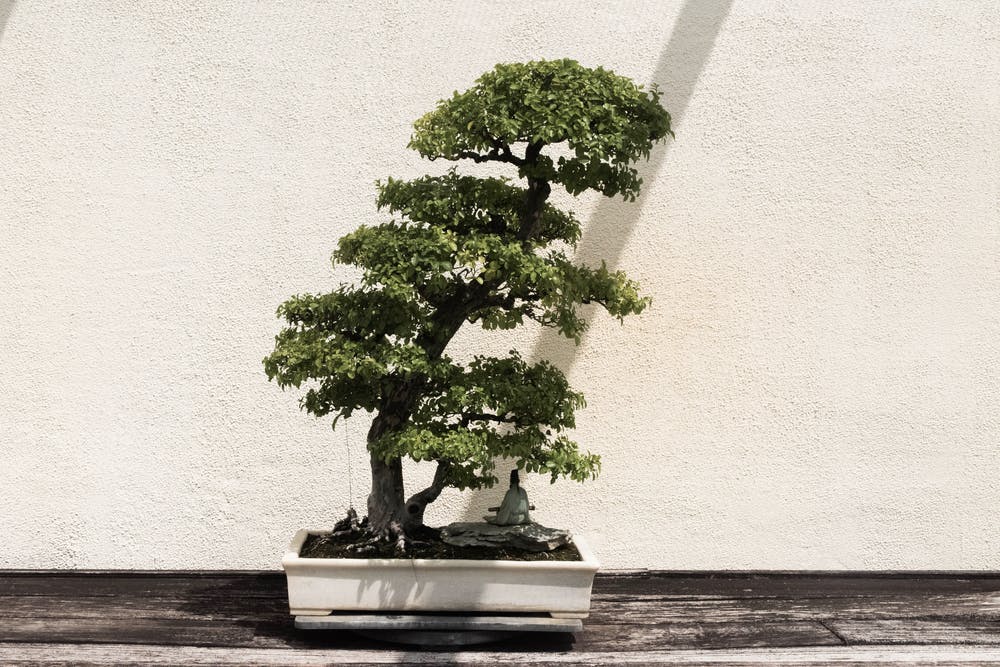
There are several common care considerations that are relevant to most types of Bonsai trees.
- Humidity: Bonsais require some humidity to maintain soil moisture.
- Bonsais require lots of light as do all trees. A Bonsai needs bright even indirect light.
- Bonsais should not be exposed to drafts. They should not be located near air conditioning, vents, or heating.
Water
Correct watering is essential to the success of caring for a Bonsai. The most common cause of death and sickness is underwatering a tree or overwatering it. A Bonsai requires monitoring. Never water a Bonsai on a regular schedule. Water your tree based on its needs through daily monitoring.
How often your Bonsai requires watering will depend on a variety of considerations:
- Tree species
- Climate where you cultivate
- Pot or container is chosen for cultivation
- Tree health
A good rule to follow is that the Bonsai’s soil bed must not dry out entirely. This is crucial because miniature trees have tiny root systems. If the soil bed is permitted to dry out, the root system may follow. This can be lethal. Water your Bonsais while the soil is still moist. Also be diligent in monitoring, as most bonsais are cultivated in shallow pots so the soil bed will dry out more rapidly.
For proper root saturation, select a container with a fair amount of drainage holes. Water the tree until the water drains from these holes. You can also place a tray under a Bonsai pot to collect excess water and then toss it.
Leaves will be yellow and branches will shrivel with too much water. You are drowning the Bonsai’s roots and adequate oxygen is not arriving. Poor draining soil can also create this condition.
Pruning or the Art of the Bonsai
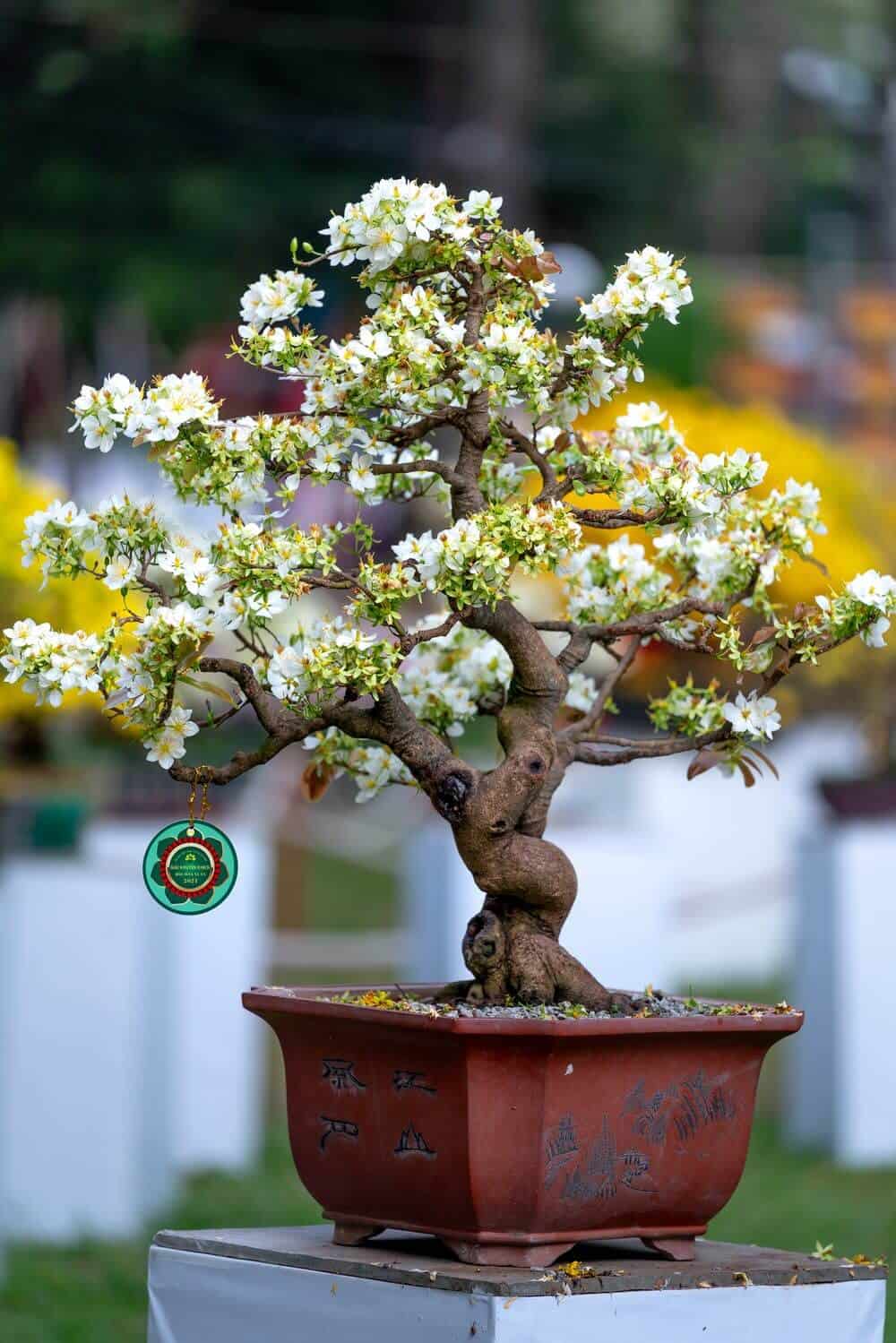
Pruning is the key to maintaining a tree tiny. For indoor Bonsais, there are no specific rules of when you should prune, nor is there a recommended season. If your tree grows several inches, you can prune it as needed.
Outdoor Bonsai need to be pruned during their growing season, which will generally be in the springtime or summertime.
As you begin pruning, trim twigs that develop three or four joints or nodes. Remove crossed or broken branches from your tree.
Pruning is not used exclusively to control the growth and size of your tree but primarily to shape it to the desired aesthetic for the tree. Remove branches or new growth found at the tree’s base. Prune all branches that you consider to be growing in the wrong direction.
For foliage removal, use small Bonsai scissors when shaping, or pinch off leaves if possible. For branch, cutting use specific Bonsai utensils or concave gardening cutters. Proper pruning will result in a smooth surface that will facilitate wound healing where the tree has been trimmed. When pruning, do not cut more than one-third of the tree’s branches and leaves or this will weaken the tree.
Feeding a Bonsai
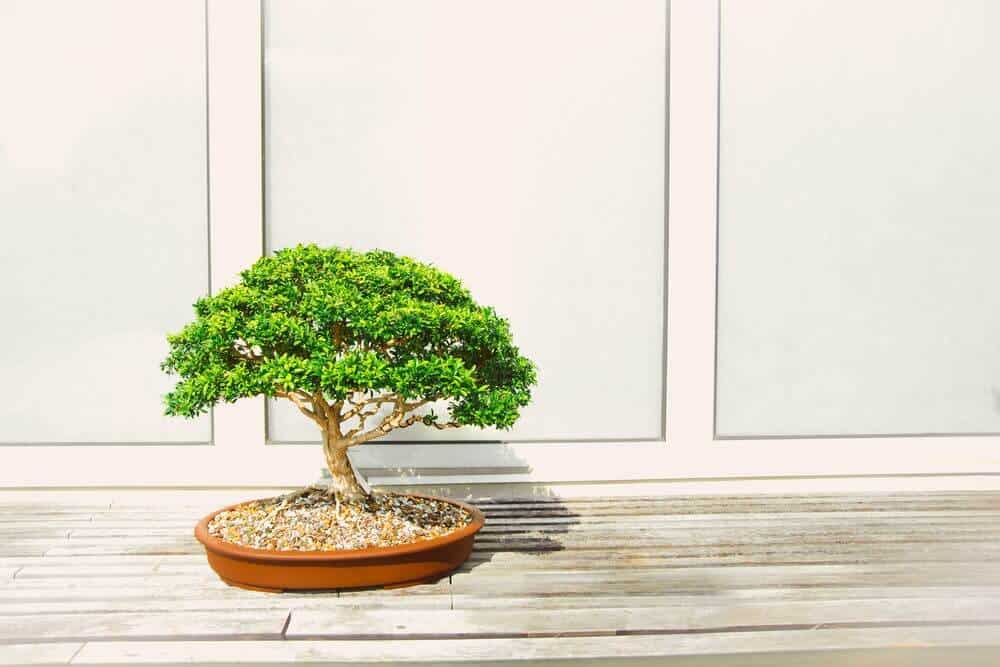
If your Bonsai is slow in reaching the desired size, establish a feeding schedule. Fully-grown, mature Bonsais do need occasional feeding. Organic and mineral fertilizers are recommended. Apply a balanced liquid fertilizer once every two weeks during the growing season.
The Bonsai Art of Wiring
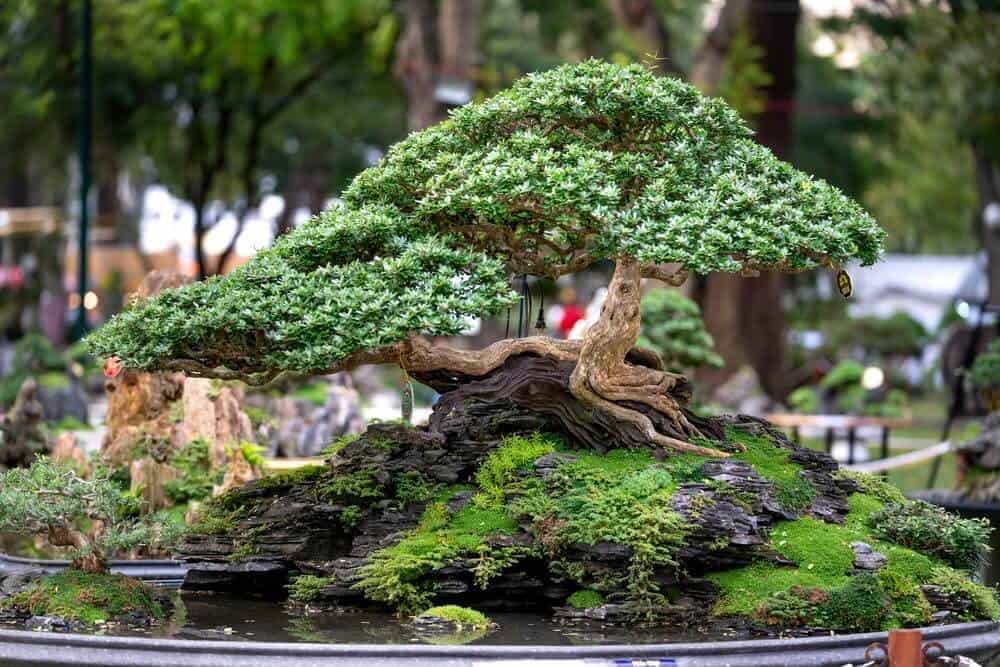
In the beginning, most of us will attempt to shape our Bonsai tree through pruning. Master Bonsai gardeners and experienced Bonsai cultivators also employ wiring. Wiring is used to direct Bonsai branches in the desired direction to contribute to the tree’s shaping.
During wiring, the Bonsai master wraps a specific tree branch with wire and then positions the branch in a specific direction to encourage a particular shape. Wiring aids the branch in growing in a desired direction or shape.
If you wish to try your hand at wiring, use anodized aluminum wire. If you are afraid of harming the tree’s branches through bending, use soaked raffia fiber to wrap them before wiring any given branch.
Bonsai Repotting

Bonsais do occasionally require repotting. Repotting your tree not only provides new nutritious soil but allows you the opportunity to prune the Bonsai’s root system.
Generally speaking, Bonsais need repotting every second year. Older, mature Bonsaiscan wait till every third year to be repotted. To verify if your bonsai needs repotting, check its root system. When roots circle the pot, they need to be pruned back.
Ideally, repotting should be done in the springtime before the beginning of the growing season. Gently remove the Bonsai tree from its container as well as any old soil found attached to the root system. Use a wooden popsicle stick, chopstick, or something similar.
Prune the tree’s root ball if the roots have grown too much in length and are particularly long. Never prune away more than one-third of the Bonsai tree’s root ball.
Add new soil. Ideally, use a soil specifically mixed for Bonsai cultivation. These mixes include a bit of organic compost and fine pumice, gravel, lava rock, and akadama.
When repotting:
- Remove the Bonsai tree gently from its pot.
- Remove any excess soil that remains on the root ball.
- Prune away the outermost roots.
- Check for root system for root rot. Cutaway if present.
- Clean the Bonsai pot well.
- Use mesh wiring to cover drainage holes. This prevents losing soil during normal watering.
- Add one layer of soil to the pot.
- Place and center the tree in the container.
- Fill in the pot with soil mix until sufficiently full.
Getting Help for Bonsai Cultivation
To cultivate a bonsai safely, consider searching for a workshop or Bonsai class in your area. Look for a local Bonsai Society or Bonsai association. Getting assistance from experienced Bonsai masters can answer doubts and worries about what is the best method to care for your tree.
If your area does not have a Bonsai group, look for online resources and groups to get you started.
A Final Thought
The Art of the Bonsai is the ultimate green art. You’ll be rewarded with pleasure, and this discipline is exceptionally satisfying as a hobby. You’ll be able to shape your miniature tree to your own aesthetic and you‘ll have a beautiful living sculpture in your house or place of business. You may even become so enthusiastic that you’ll have the perfect gift idea for lucky friends and family.

